Among most northwest salmon anglers two words generate a level of anticipation and excitement like no other. For about two and half weeks you can’t find a hotel room, lines are long at the launch and you can just about walk across the boats to get from Oregon to Washington. Those two words are “Buoy 10”.
As most know, Buoy 10 is not only a specific buoy in the lower Columbia but it’s also an area that collects the entire Columbia Basin’s salmon before they move past Tongue Point upriver to where their lives started.
The buoy itself is just west of Cape Disappointment at Illwaco and just south of center of the river. It marks the beginning of one of the most treacherous river-to-ocean bars on the planet, the Columbia River bar also known as “the graveyard of the Pacific.”
The Buoy 10 fishery extends from the buoy upriver to Tongue Point, a huge heave of rock that extends into the Columbia east of Astoria on the Oregon shore. That fifteen by four or five mile expanse of water is considered the estuary where salmon and other fish species recklessly feed on the schools of anchovy that ball up in this final saltwater stop.
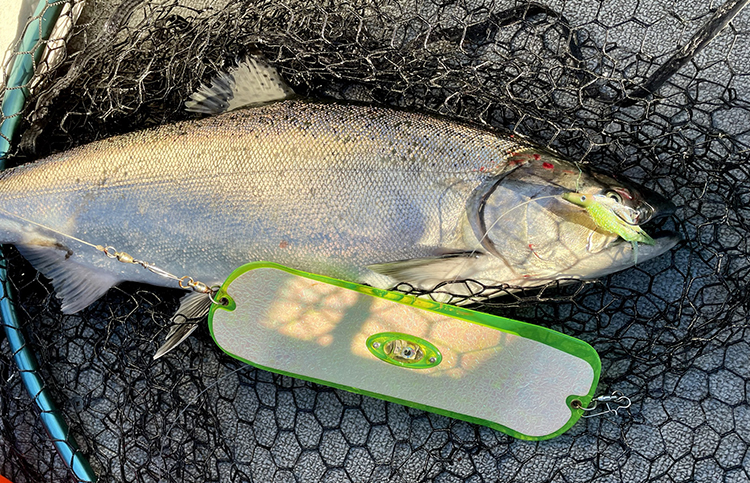

Generally, the season opens August 1st and runs to Labor Day. Some years it opens a little later and other years it closes a little earlier, all in the name of conservation and appropriate fisheries management given the constraints leveled by the federal government.
This year it opens on August 1st but with heavier than usual restrictions. Only marked (fin-clipped…generally adipose but other fins may be clipped too) salmon both Chinook and Coho, can be kept until August 24th, you can keep two but only one can be a Chinook. That means one Chinook, one Coho or two Coho.
From August 25th to September 7th you can keep one Chinook and one marked (hatchery) Coho or two hatchery Coho.
From September 8th to September 30th you can only retain Coho, all Chinook, marked or otherwise have to be released BUT you can keep three Coho.
October 1st to October 31st Chinook and hatchery Coho can be kept. The daily bag limit is three salmon but only one can be a Chinook.
November 1st to December 31st Chinook, hatchery Coho and hatchery steelhead can be kept and the bag limit is three salmonids but only one can be a Chinook and only two can be steelhead.
The wild card this year is the first 24 days of the season. The mark rate for Chinook is low, so those fish are more or less, unicorns. Most will be fin-clipped tule Chinook which most agree make poor table fare. There may be some coho available but most years they don’t show in any appreciable numbers until sometime in September. Last year it was October. It will be interesting to see what this does to the crowds. I wouldn’t be surprised to see the effort heavily curtailed this year until the 25th.
And be sure your hooks are barbless. Lots of citations are issued every year for using barbed hooks.
Regulations at Buoy 10 are just part of the game and the reason we can have a season. You’re well-advised to check the regs anytime you go fishing, crabbing, clamming, hunting or harvesting anything in the Northwest. So many fish and wildlife species are protected to assure their viability for future generations. And, in some cases like Buoy 10, to protect fish species that have been listed as “threatened” or “endangered”. The management of those stocks is careful and conservative so that the States and not the federal government continue to manage these fisheries for anglers. Conventional wisdom holds that if it’s left to the feds to manage they’ll just close it down or even more sharply curtail already constrained seasons.
Regulations aside there is a certain magic to this area. Steeped in centuries of history this collision of the Columbia and Pacific creates a savage torrent of currents and waves that has swallowed thousands of ships. It can be quiet and calm one minute and on the turn of the tide be as vicious and unforgiving a place you’ll find anywhere on the planet.
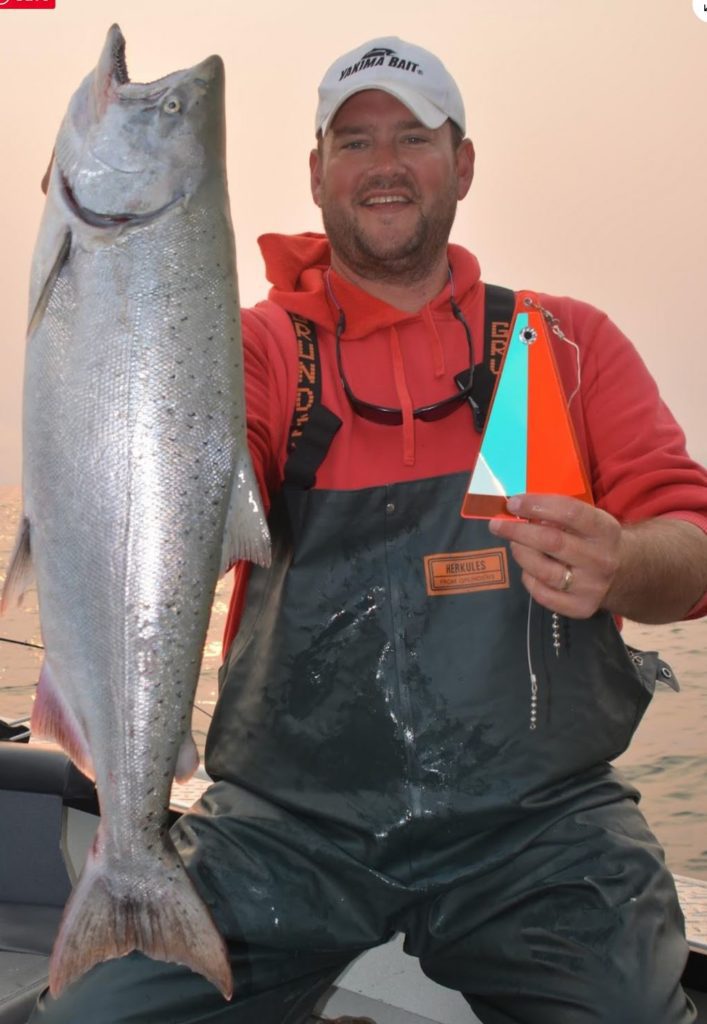

These tides attract salmon from the ocean to begin their upriver migration into the Columbia Basin. Understanding the tides is an important part of success in this fishery. Soft tides, those tides where the exchange is only a couple of feet between high and low tide, do little to pull fish into the river but they’re a pleasure to fish as the river generally lays down, making for easy boating. Conversely, a big incoming tide of say, 6 or 8 feet or more with an east wind pushing against it can blow the river up into a fierce wash of tightly spaced whitecaps that can swallow a boat. Those bigger tides pull fish from the ocean into the river as cooler ocean water and feed find their way across the bar and into this huge staging area.
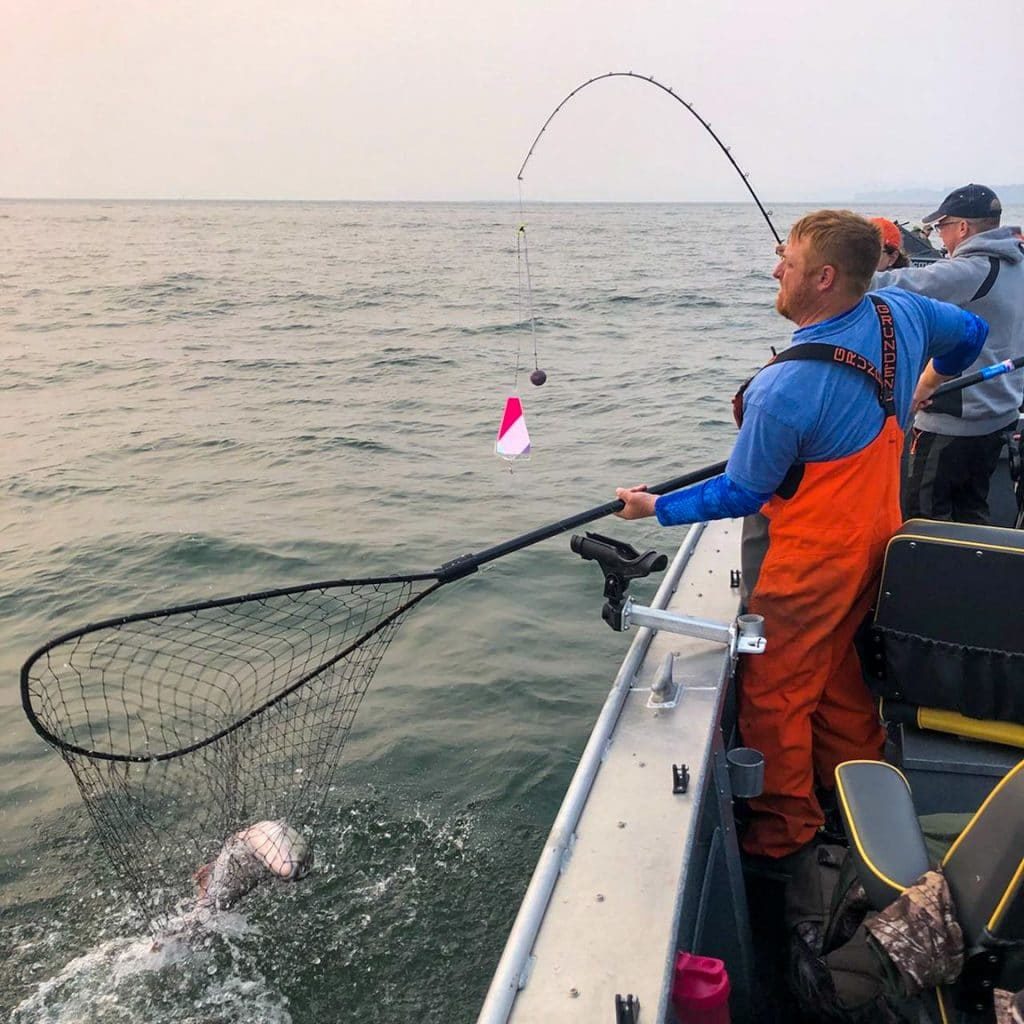

Then, working against these bigger tides, boats point their bows west into the tide allowing the incoming tidal current to slowly push them upriver. For those fishing divers, heavy rods will be strained against the surge as lines sing from ocean breezes and rod holders creak until even more pressure is applied with the savage strikes that come with these tides.
I’ve seen rod holders explode and more rods than I can admit, shattered against this confluence of forces that are found in this special, fish-producing slug of saltwater. It’s one of the many features of this fishery that make it so exhilarating. The power, the beauty, the landscape and the boats…lots of boats.
For those that have put their time in are also lured by the unknown. As that tide pours across the bar you have no idea what’s in it. 4-to-6 pound coho, thundering Chinook to 50 pounds or more (rarely), an occasional steelhead, sea bass, ling cod and even halibut are caught.
We spent the last couple of seasons straying from our regular, decades-old program of herring. Instead, we trolled spinners and a variety of hard plastic lures. They certainly work but I have yet to master them. I’m going back to light leads (6-to-8 ounce), triangle flashers and herring. We’ll fish green label whole and cut plug our blue label baits. Divers are making a comeback in our boat this year too. Since my childhood I’ve fished these. Then, it was with a 4’ leader and a herring. I’ll probably try that this year. But I’m also going with a Delta Diver and a triangle flasher attached right to the diver with a 40” leader. When that tide pours in at Buoy 10, 11 and 12 it’s just too good an option to pass up.
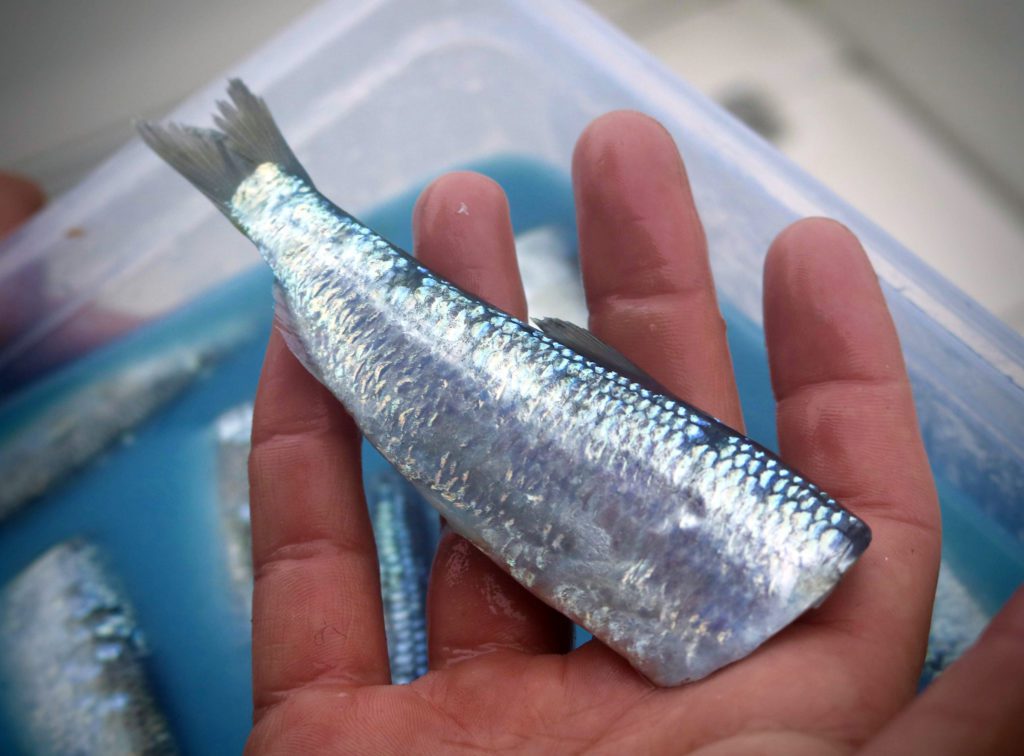

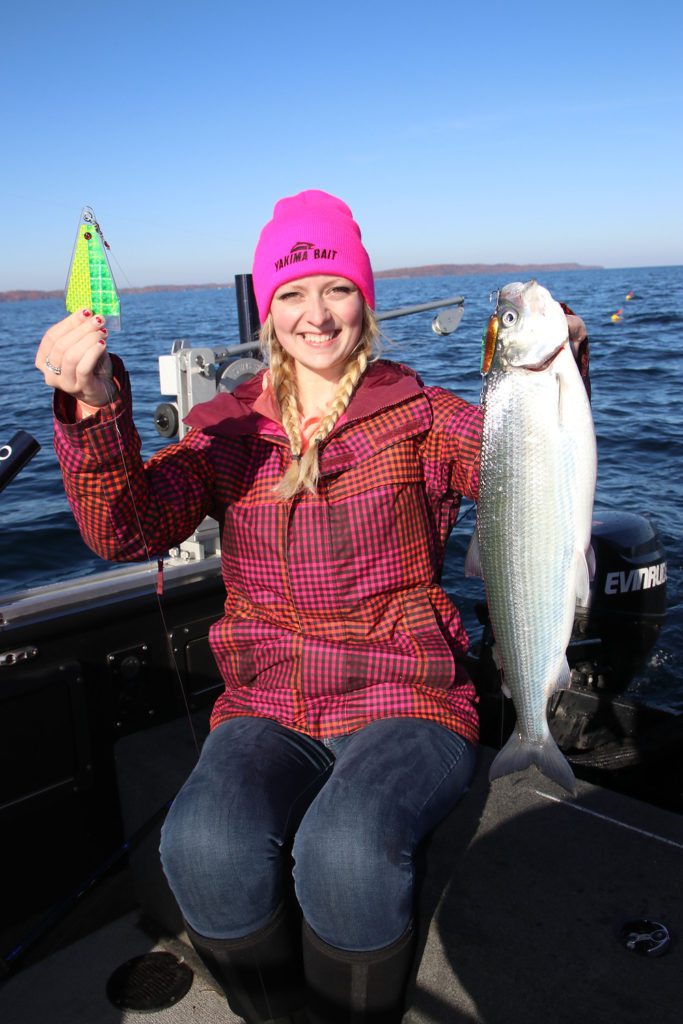

Here’s some helpful Buoy 10 tips.
First and foremost, always, always, always, wear your PFD. When things happen, especially when they go bad, they go bad fast. More often than not, too fast to get your PFD on. It’s the most important piece of equipment in your boat at Buoy 10.
Second, you don’t have to fish in the crowds. I avoid them most days and you’ll rarely find me fishing in the fleet. If I do, I’m on the fringes and away from the traffic.
If you’re running the boat, even if you’re not, situational awareness is essential. Know what’s going on around you and where you are in the river at all times. Clatsop Spit near buoy 14 has taken its fair share of boats. A boater was air-lifted to a nearby hospital from their boat that had run aground on Desdemona Sands last year. And of course, knowing where other boats are in proximity to yours is always a good idea. You’re well-served to make your moves early before you’re on top of another boat and have to avoid a collision. The best Buoy 10 boaters know what’s going on around them at all times.
Along with other boats and all the in-river hazards is the weather and tides. Always know where you are on the tide, what size the tide is, when the tides changes, etc. Outgoing tides, particularly the closer you get to Buoy 10, the rougher the river. Add a west wind to that equation and you’ll want to be close to port and where you launched so you can scoot in at a moment’s notice to avoid trouble.
A common mistake is to underestimate the power and influence of the tides and the wind not knowing the river can get ugly fast. Here’s some good advice, the extra 10 or 15 minutes you’ll spend fishing before you realize it’s going to be a tough run back isn’t worth it. You’ll be well-served to make your move and get close to wherever you put your boat in with the first breath of wind. 95% of the time it won’t go away, it will just continue to build. If, by some strange stroke of fate it does subside you can go back to what you were doing. But better to be safe than sorry (I’m sure whoever coined that phrase fished Buoy 10).
When the tide’s running hard and you’re fishing against it, fish whole herring. Cut plug just don’t hold up to the force of the current and end up “blowing-up”, rendering them ineffective. You’ll be able to fish whole herring trouble-free for an hour or more.
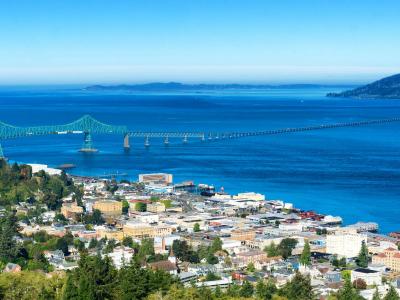

That brings me to the next point. Change your bait at least once an hour. Some will do it much sooner, every 40 to 45 minutes. Also, make a point of checking your gear for weeds every 15 to 20 minutes. Reel one rod up at a time, so you continue to fish. Most years weeds aren’t an issue but it’s a good practice and there are those days when weeds make fishing tough.
To brine or not to brine? We brine our herring when we arrive. For springers I’ll do it the night before but for fall fish we drop them into our brine that morning. When we’re fishing whole green label, we’ll fish them as “popsicles” right out of the pack. We’ll thrown them in a saltwater brine with some additional sea salt for the day. Same with blue label herring that we’ll be plug cutting. Whatever I brine that day, I either use or dispose of that day…I don’t fish them the next day.
Fresh or frozen, herring or anchovy? For me, this is a matter of preference. I prefer to fish frozen herring and occasionally fresh anchovy…but I’m a tried-and-true herring fisherman. I’ve fished plenty of fresh herring and I know lots of really good anglers that favor fresh bait, but for me, rigging and fishing frozen herring is something I feel confident and comfortable with.
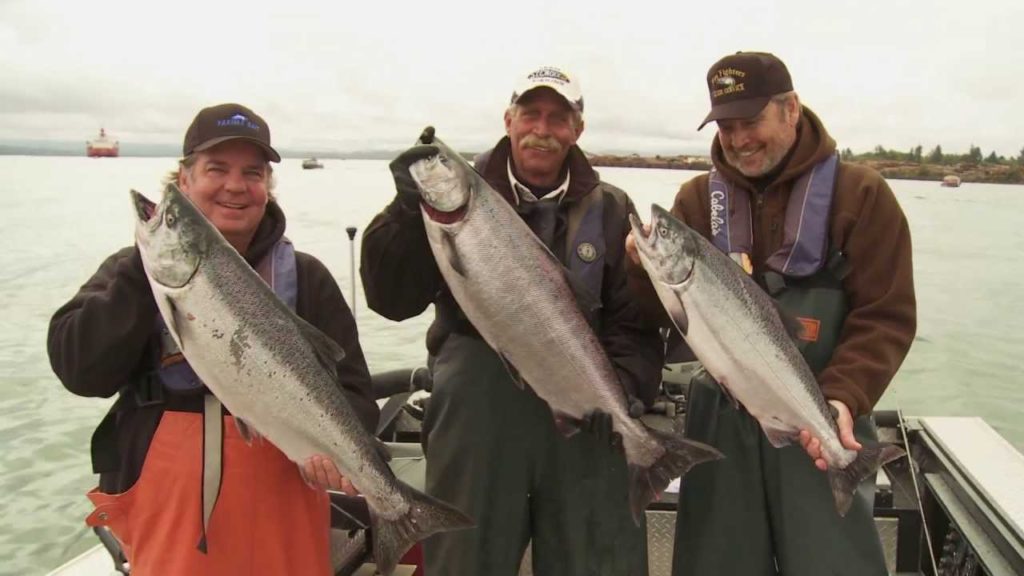

Spin Fish, Super Baits, 360’s, spinners, etc.? Bottom line, they all work and work well. Again, it’s a matter of preference. Depending on the day, they’ll outfish bait hands-down. I had some remarkable years at Buoy 10 fishing Tom Mack spoons, a discontinued lure that commercial trollers used a lot. I still have a dozen or so left and fish them on occasion…they’re lethal. McOmie’s Lures spoons look incredibly fishy and I’ll give them a try this year. I have an arsenal of Yakima Bait SpinFish and Brad’s Super Baits and I fish them but I’ve found that you have to pick a side of the fence. These baits, particularly behind a 360 flasher need to be fished faster than I fish herring. That means I need to choose one over the other which means I’ll need to re-rig everything when I make the decision to switch. There are days when I do but day-in and day-out on a good incoming tide I like herring first. Again, I cannot overstate the fact that all these other techniques are at least equally effective and sometime more effective.
Last, know where you are. Know where Buoy 10 is, along with 11, 12, 14, etc. and where Desdemona Sands is and where you can and can’t cross the river. If you go blasting across the river at Astoria there’s a very good chance you’ll be high and dry. A GPS I think is essential equipment down in this fishery but it’s not required. Know what the red and green buoys mean and the depth of water you’re in. Stay out of the navigation channel, it’s surprising how fast those huge freighters can be on top of you. Given everyone and everything a wide berth. At times the currents make it difficult to maneuver, especially at slow speeds, so do your best to stay well away from bridge abutments, pilings, jetties, other boats and sand bars.
Given the proper caution, gear and knowledge, Buoy 10 is a singularly exceptional experience. On those gray days when the weather’s cool, the river’s flat and the estuary is full of salmon there’s an enchanting almost mystical quality to the area. I’ll find my 27’ to 35’ foot line and go to work trolling along a contour that is a highway for these fish hoping for my small piece of the bounty. With nearly two million salmon expected to arrive, my chances are better-than-good to hit paydirt…and so are yours.
Good fishing.